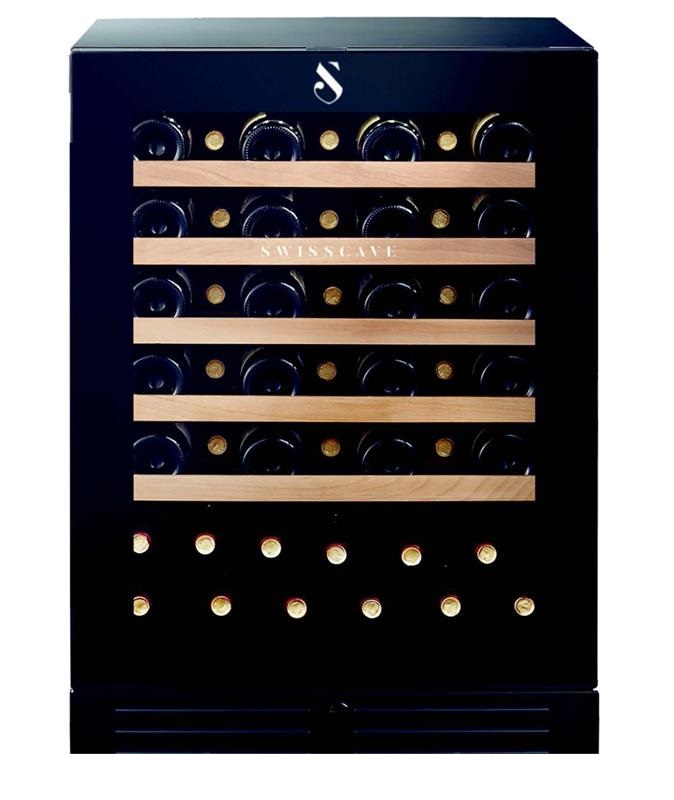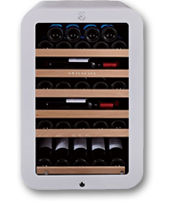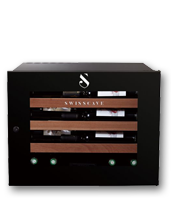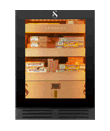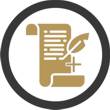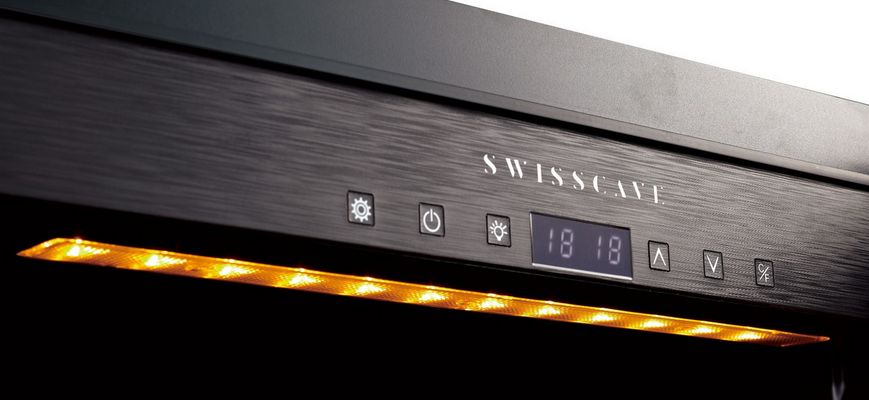
- Home
- Temperature Deviations in Wine Cooling Cabinets

Wine lovers are always surprised by how cool, not cool, cold or even hot the wine is when it comes out of the wine cooler cabinet.
What temperature do I actually have in the wine cellar and what temperature is the wine itself? The one on the cabinet display? or a different one?
Why is the display on the wine cooler different to my thermometer, which is in the bottle ?
To answer these questions,, we first need to clarify which temperature we are talking about:
1. the temperature before or after the compressor has cooled
2. the temperature measured at the top, middle or bottom of the wine cooler
3. the temperature in the bottle, which I have taken out of the wine cooler and opened?
Technicians have a saying: ‘He who measures, measures rubbish’.
Firstly, it must be realised that wine coolers work with tolerances, which are relevant for maturing wine, meaning they are not laboratory equipment and are not deemed so. A certain degree of temperature fluctuation is normal, as long as the average temperature remains stable. For the wine, it is not important if it is stored 2 degrees higher or lower, or if the temperature in the chamber follows a wave motion, as long as the average temperature remains stable. The mass of the wine changes temperature extremely slowly and has a balancing effect. The wine temperature does not follow each temperature deviation in the cooler, but instead remains stable at the average temperature. The ‘set’ temperature display may vary – depending on whether the compressor or fans are working or not, and even more so when the wine cooler door is opened. This can cause vortices which result in the display to momentarily show values that are too high or too low. Nevertheless this does not impact the wine temperature as such.
Inside a wine chamber, the temperature may vary between the bottom and top, and the front and back, depending on the compressor activity and the ambient temperature versus chamber temperature. In particular, the temperature at the bottom of the cooler is usually a few degrees cooler than at the very top. This is particularly true for large, single zone coolers. This effect can be made useful if you position the different types of wine more on the lower or upper shelves to suit its drinking/storage temperature. In 2 zone models, the arrangement of the cooling system means there is a minimum temperature delta of 5-6° between the upper and lower cooling chamber.
Below we look at three essential aspects:
1. Compressor / cooling system
Many manufacturers of wine coolers define a temperature deviation of +/-2 degrees Celsius. This usually refers to the hysteresis, i.e. the turning on of the compressor which, for example, occurs when the temperature sensor in the wine cooler measures a deviation of 2 degrees of the set temperature .
However, this is far from the only – and not even the largest – temperature variation that we face.
2. Cooling cabinet temperature measurement
The temperature sensor itself also has a system inaccuracy – usually in the range of +/-1 degrees.
A greater influence than this is the position of the temperature sensor. Here, deviations can be in the range of 3-6 degrees, depending on the product, refrigerator size and applied cooling system. The cool air sinks down slowly as the warmer air moves into the upper space. This can lead to noticeable temperature differences between the top and bottom, particularly in large wine coolers. Two-zone wine cabinets have the advantage that the individual cooling rooms are smaller and so have less temperature difference in the individual climate zones. Some manufacturers are working with fans to minimize the temperature differences by circulating air. However, the impact on overall energy consumption in this scenario is a drawback. With an automated On-/Off sequence, the power consumption of the fan can be minimized.
3. Wine Temperature
As long as the wine is in the fridge, the wine temperature remains at the average value of the hysteresis of the cooling system. If, for example, the cabinet has a regular variation of 2 degrees due to the cooling process, and the temperature fluctuates between 12-14 degrees Celsius, the wine temperature will remain at 13 degrees. Because the liquid in the wine bottles absorbs temperature differences incomparably slower compared to the mass of air in the refrigerator, the wine temperature remains stable, even if the cooled air follows a temperature wave form. This is true even if the temperature in the wine cooler increases, for example because the door was open more frequently or for longer periods. The temperature of the liquid remains stable due to its great mass.
Now, if the wine is removed from the wine cooler, opened and poured into a glass, the temperature of the wine increases by around 2 degrees within just a few minutes. This should especially be considered if the wine cooler cabinet is operating in ‘drinking temperature control’ mode. If I want to enjoy white wine at 10 degrees, I should cool it at 8 or even 7 degrees. The same with red wine, which for example I would want to consume at 17 degrees. It should be cooled at 15 degrees.
Additional Remarks
Positioning the wine in the fridge:
When positioning the wine in the wine cellar, you can take advantage of the thermodynamics (warmer at the top, cooler below) by placing white wines and red wines to be stored for longer at the bottom, and younger, ready-to-drink red wine in the upper part of the wine cooling cabinet.
Ambient temperature:
Another influencing factor is the ambient temperature. If it is outside of the operating temperature range specified by the manufacturer, there may be temperature deviations. You will need to distinguish between two operating modes: the ideal operating temperature range that the wine fridge can meet with the specified deviations (in commercial systems it’s often around 15 – 30 degrees) – and the allowed operating temperature range, which may be much wider (e.g. 0 – 35 degrees), but here the real achieved temperature may deviate substantially from the set value.
Energy consumption:
Another issue is energy consumption. Besides the choice of cooling system and the insulation efficiency, energy consumption also depends on the ambient temperature – and not – as is sometimes mistakenly assumed – on the temperature set on the control board. Having said that, the wine cooler must be put in a place where plenty of air circulation along the cooling fins is possible (air fins are usually placed on the rear wall of the cabinet). If, on the other hand, the wine fridge is located in a cold room and needs to be heated by the heating coil to the desired temperature, energy consumption particularly depends on the actual average cabinet temperature in relation to the actual average ambient temperature, as well as on the efficiency of the heating system and insulation.


